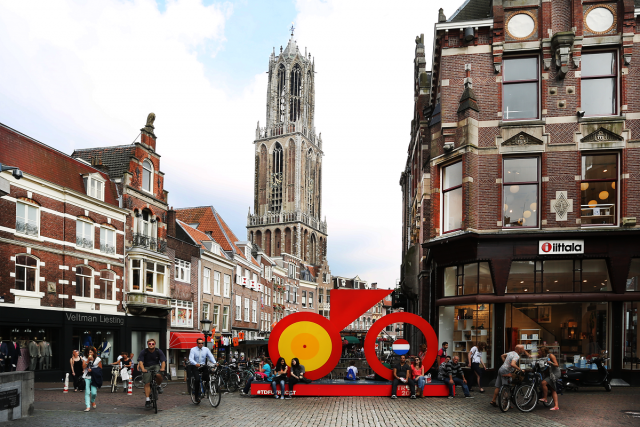[Opinion] 'Inter-view' by Bengamin Vanderwalle, Netherlands [해외문화]
Who would you walk straight past, as you stroll around town?
글 입력 2015.07.24 00:56
-
 ▲ Inter-view by Bengamin Vandwalle, Source : Google image
▲ Inter-view by Bengamin Vandwalle, Source : Google image
Benjamin VandewalleInter-view
Who would you walk straight past, as you stroll around town?And who would make you turn your head?The young Flemish choreographer Benjamin Vandewalle is asking you to stop for a while amid the bustle of the city. Inside his three little micro-theatres he arranges an intimate rendezvous with a complete stranger.
Review of'Inter-view'
When I went to the Stadhuisbrug to participate in this interesting performance, I didn't know what is inside the box. I was unknowing passerby in the Stadhuisbrug, couldn't notice what exactly is going on until I sneaked a peek into one of the show-boxes.When I sneaked a peek into the box, I saw a head in front of me. I scream. I tried to have a conversation with her. But I could not get a reply. I gave up talking with her. Started to look at her in detail like voyeurs. Even it was few weeks ago when I took this performance. I remember her face. She is blond, has green eye and a little pimple on her forehead. She seems to be really enjoying this performance. I felt she is an old friend I have known for a long time rather she is a actor or performer.Normally I walk straight past as I stroll around town. After I participated in this performance, passerby is no longer just passerby. I find myself looking passerby narrowly. I observe their __EXPRESSION__ and face to figure out their mood , not just what they wear, how tall they are, and how pretty they are. It lasted for few hours until I got back home. This change of my strolling reminds me of De Certeau ´Blind walking´ which is a non-reflexive use of urban space.▲ Stadhuisbrug in Utrecht , Source : Google image The Stadhuisbrug is a bridge over the old canal in the town of Utrecht. The Stadhuisbrug is adjacent to the town hall and the headquarters of the municipal library, and several shops are also located there. The Stadhuisbrug is always full of people.
The Stadhuisbrug is a bridge over the old canal in the town of Utrecht. The Stadhuisbrug is adjacent to the town hall and the headquarters of the municipal library, and several shops are also located there. The Stadhuisbrug is always full of people.
Although there are many people in the Stadhusisbrug. Ironically I could not get a feel for humanity. All I could see was many people who walked straight past. I felt the Stadhuisbrug is the aisle or the place for meditating passerby rather than place for communication.Analysis
The Stadhuisbrug is used for promotional booths of political parties. The team photo of the football club FC Utrecht shot there. Also At the time of the witch persecutions were people accused of witchcraft, sometimes alongside the torture also waterproof undergo make them confess. From the Stadhuisbrug they were with thumbs and big toes tied together lowered on a rope in the old canal.The Stadhuisbrug provides a stage to interact with friends and stranger. Also The Stadhuisbrug is a place to look and be look at. Inter-view follows the function of this place. Both inter-view and the Stadhuisbrug are like theatre. The difference between them is target. normally there is the relationship between object - or actor- and audience in the Stadhuisbrug, but when the inter-view started performing, there was the relationship between one to one.There was a mutual interconnection between spatcal elements and everyday bodily experience of the place.Non-place, which are created for a long being, ´discourage the thought of setting in´, making the colonization or domestication of the space more than impossible. (Lavrinec) Inter-view in public space can be considered as an act of ´domestication´ of non-place.
With inter-view, Benjamin reduces the theatrical phenomenon to its essence, bringing it back to its etymological meaning and making the Stadhuisbrug -public space- being reimagined and reanimated. (Neal) which would encourage the audience to invent their own scenarios, different from those proposed by the controls of city function. Therefore the drift itself is not a self-sufficient act, but rather a preparatory stage of the process of the revolution of everyday life.ReferencesZachary, P, Neal. Locating public space.Lavrinec, Jekaterina. 2011. REVITALIZATION OF PUBLIC SPACE: FROM "NON-PLACES" TO CREATIVE PLAYGROUNDS .Michel de, Certeau. 1984. The Practice of Everyday Life [YEEHYUN KIM 에디터]<저작권자 ⓒ아트인사이트 & www.artinsight.co.kr 무단전재-재배포금지.>
[YEEHYUN KIM 에디터]<저작권자 ⓒ아트인사이트 & www.artinsight.co.kr 무단전재-재배포금지.>

